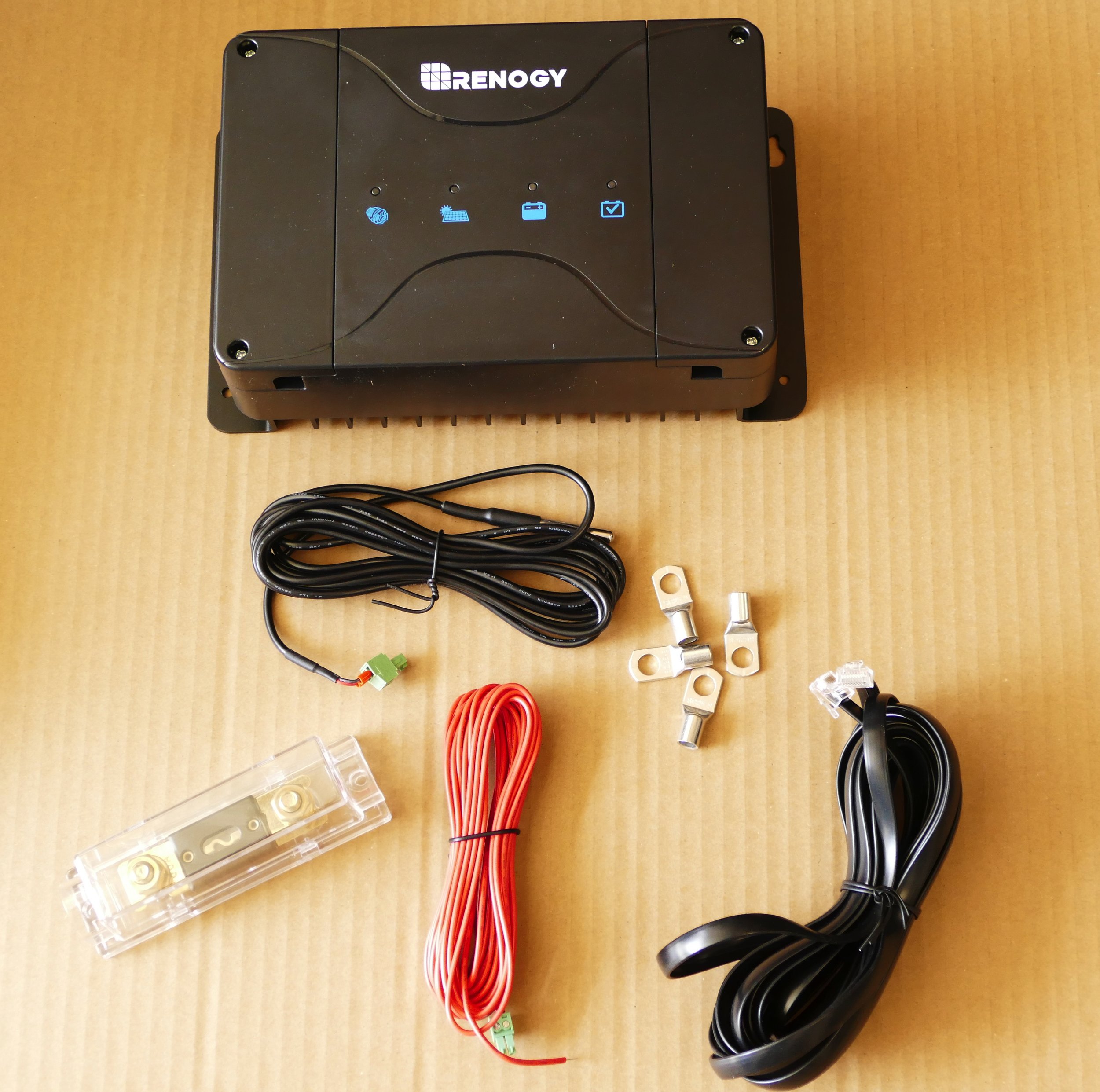Blue View - Evaluation of the Renogy DC to DC Battery Charger
/The Renogy DC to DC Charger
When we were living aboard Nine of Cups, our 45' cutter, we had a starter battery for the engine and a bank of house batteries that powered everything else aboard - our navigation equipment, radios, lights, bilge pumps and refrigerator to name just some of the electrical and electronic gear aboard. When we were away from marinas and shore power, which was most of the time, keeping the house batteries charged was a constant battle. This was especially true on passages, when our power demands were higher because of running lights, radar, autopilot, chartplotters and communication equipment.
To recharge the house batteries, we depended mostly on solar panels, two wind turbines, and a generator attached to the propellor shaft that spun while we were sailing. These three sources usually kept the house batteries charged, - but there were times when they just weren't enough. On cloudy, windless days, for example, we produced very little power, and if our batteries became depleted below 50% capacity, we resorted to starting the engine and using the engine alternator to recharge the house batteries.
Back even a few years ago, using the engine alternator to charge two sets of batteries - the starter battery as well as the house batteries, presented a dilemma, however. Since the two sets of batteries had to be isolated from each other, and since the alternator could only sense the voltage on one set of batteries, one set would either be consistently undercharged or overcharged. The problem was compounded if the two sets of batteries were different chemistries, i.e. an AGM starter battery and lithium house batteries. There were several partial solutions using various battery isolators and battery combiners, but no perfect solution… until now.
A couple of years ago, Renogy, a company that specializes in alternative energy products, introduced a DC to DC battery charger. It is a clever design that combines the charging current from both a solar panel array and the engine alternator, and converts that current to the ideal charging profile for the house batteries. The engine alternator still charges the starter battery as it is running, but sees the battery charger as just another 12 volt load - no different than running a bilge pump on a boat or the windshield wipers on a van.
A Block Diagram of the Charger Connections
The DC to DC charger uses the latest MPPT technology to maximize the solar array output, then converts this DC voltage to the charge voltage needed by the house batteries. When the engine is started, the alternator output voltage is also converted to the desired charge voltage and combined with the solar output. Voilá - the perfect solution in my estimation.
The are a couple of minor shortcomings, though. First, if there is any solar charge voltage, the alternator current is limited to half of the rated output. For example, with the 50 amp DC to DC charger, if there is no solar output, the charger will draw 50 amps from the alternator to charge the batteries, but if there is even 1 amp being produced by the solar panels, the alternator current is limited to just 25 amps. This drawback might be minimized by adding a relay, controlled by a switch or perhaps the ignition circuit, that disconnects the solar output when the engine is running - but I would need to investigate further to make sure that the sudden voltage spike and/or current surge when the solar array is suddenly switched on or off doesn't damage anything.
The second shortcoming is that the output from the solar array is limited to a maximum of 25 vdc. That means that the solar panels must be connected in parallel, not series. Oftentimes, it is desirable to connect the panels in series or in a combination of series/parallel to reduce wire size and optimize the solar output.
Even with these minor drawbacks, however, I think the Renogy DC to DC battery charger is a winner - whether aboard a boat or on our Promaster van conversion.
We just bought the 50 amp version (as of this date, it is available in either a 30 amp or 50 amp output). Installation in Blanche was easy and straightforward, and we even made a video showing how, which you can see here.
What’s in the box
And just for full transparency here - we received no compensation from Renogy for our endorsement… we just like their products.
See you next time…




